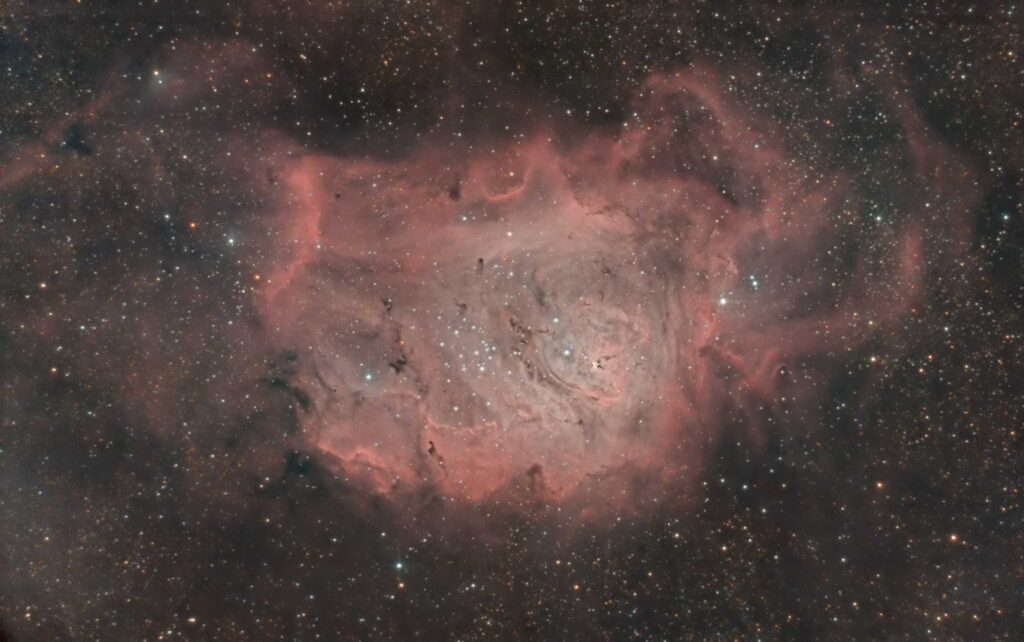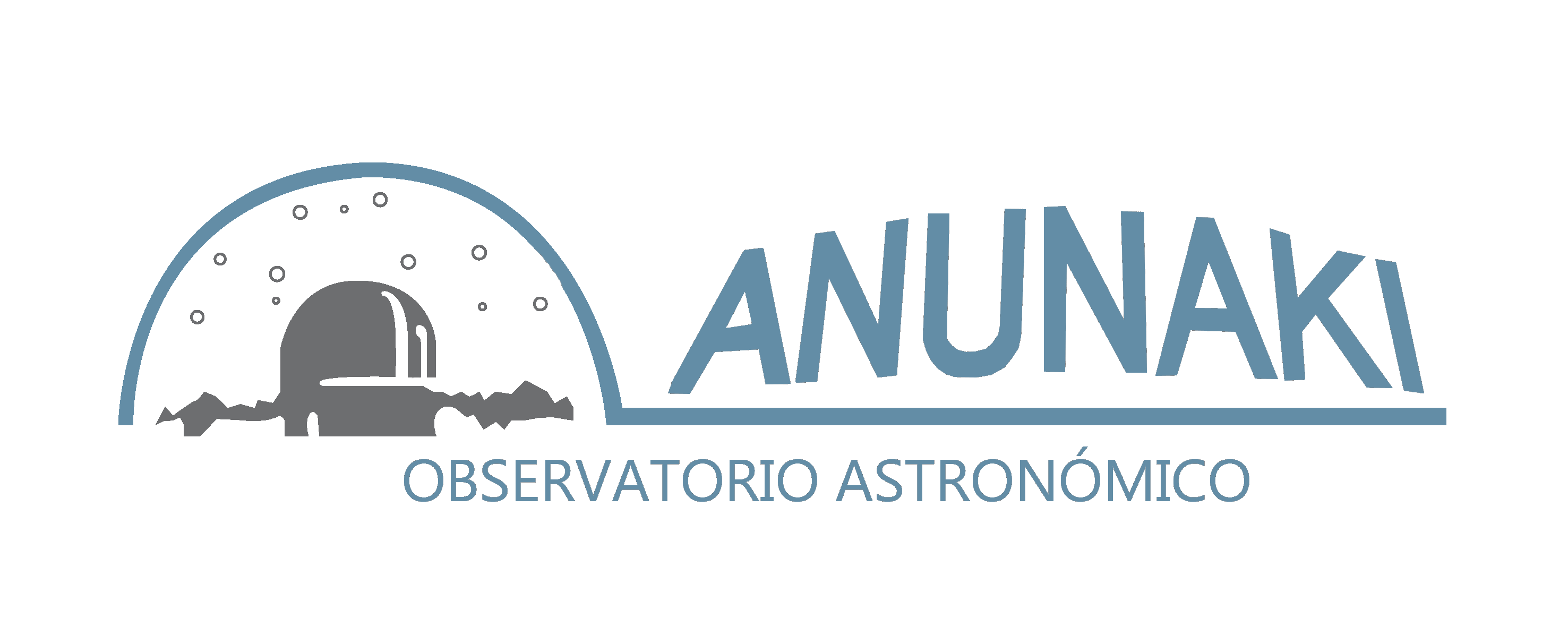The Laguna Nebula (also known as Messier 8, Messier 8, M8 or NGC 6523), is an emission nebula (specifically it is a Region H II) located in the constellation of Sagittarius. It is approximately 5,000 light-years away. It was discovered by Guillaume Le Gentil in 1747.
The nebula appears to have a depth comparable to its width and includes a number of Bok globules, some of which have been catalogued by Edward Emerson Barnard as B88, B89, and B296. The discovery of five Herbig-Haro objects at the southern edge of the nebula (HH893, HH894, HH895, HH896, and HH897) provides further evidence for ongoing star formation.

Technical data:
Telescope: SkyWatcher ED80
CCD:Atik314L+
Focal Length Reducer: SW 0.8x
Filters: LRGB+ Ha12nm
Telescope Guide: S/C 203mm
Mount: LX200 GPSR
Guide CCD: QHY5
CCD Temp:-5º
Ambient Temp:22º
Location: Anunaki Observatory / Rivas Vaciamadrid (Madrid)
In the brightest portion of the nebula is a structure known as The Hourglass, in which intense star-forming activity occurs; there, in 2006, they identified four Herbig-Haro objects: HH867, HH868, HH869 and HH870.
It also includes a tornado-shaped dust structure caused by the action of ionizing radiation from the multiple star of spectral type O Herschel 36.
